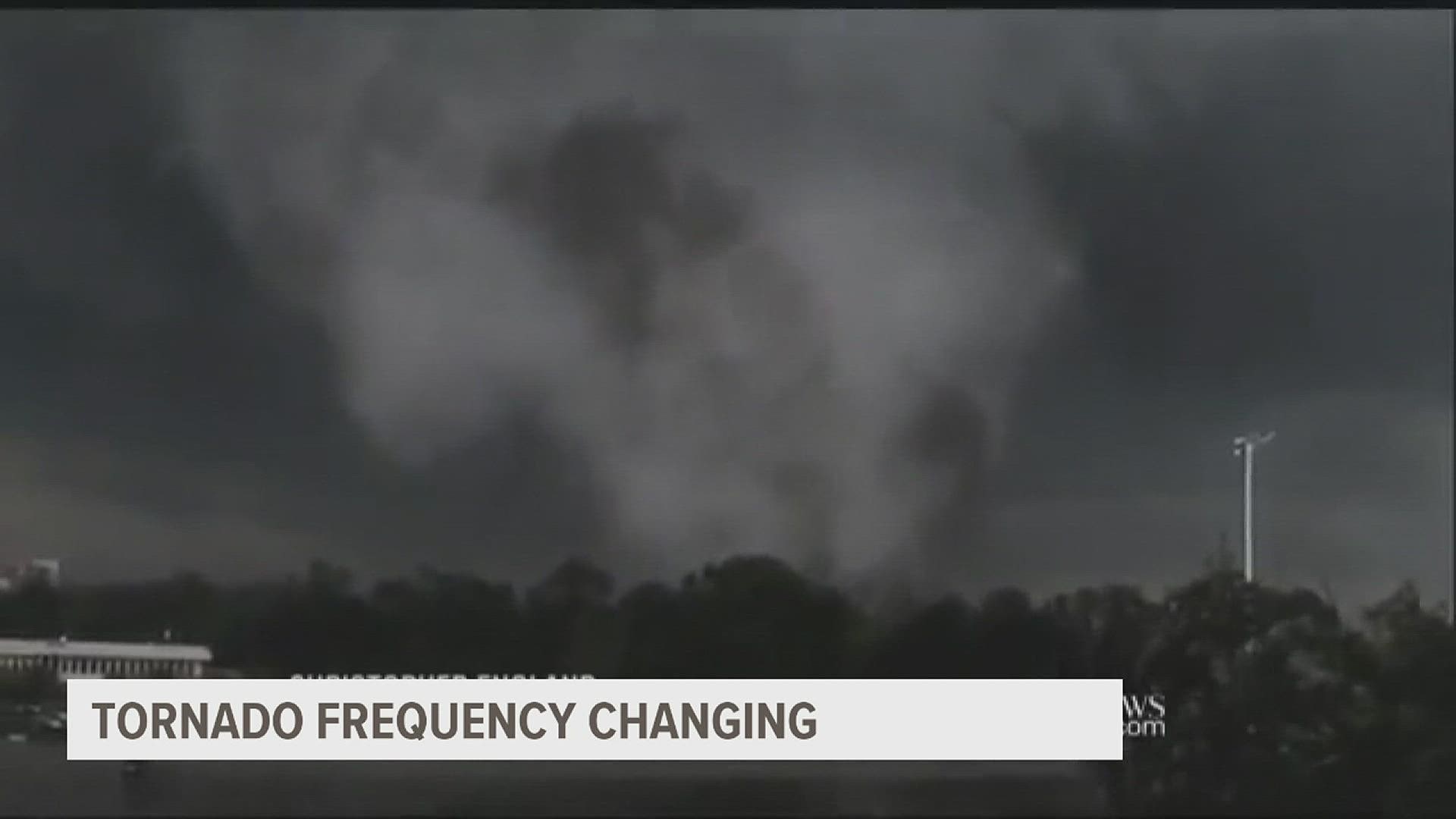MOLINE, Ill. — When you think of a tornado, you're probably picturing a big funnel cloud stretching from the sky to the ground and destroying everything in its path. But that's not the only form a tornado can take.
There are five main types of tornadoes types according to the National Weather Service:
Rope
These are the smallest types of tornadoes. They are very narrow, and usually look like like a lasso. Although they are the smallest, they can still cause major damage. The narrower the tunnel, the tighter it is and the more intense the winds are.
Cone
These are the classic image of a tornado. Since they're wider than a rope tornado, they can have a wider and larger trail of destruction. There is also a sub-type of cone tornadoes called a stovepipe, where the bottom and top of the clouds are similar in width.
Wedge
This type of tornado has a funnel that is at least as wide at ground level as it is tall. This term is often used to describe large tornadoes, but a true example of the phenomenon is very rare. These are very powerful tornadoes that usually measure as EF-4s or EF-5s.
Multi-Vortex
This is when two or more funnel or debris clouds are happening at the same time and meet. They can rotate around each other or around a common center, or even combine into one large tornado.
Waterspout
This a column of wind that rotates over a body water. The funnel or column is not filled with water; the wind that makes up a waterspout is actually created by condensation.. They can come ashore and cause damage, but they usually dissipate once they make landfall.
There are two sub-types of waterspouts: tornadic and fair-weather. Tornadic waterspouts have the same characteristics as land tornado, and are accompanied by rough waters, large hail, and lightning. Fair-weather waterspouts form along the base of developing cumulus clouds and are not associated with thunderstorms, unlike tornadic waterspouts. They don’t move much and are already near maturity by the time they become visible.

